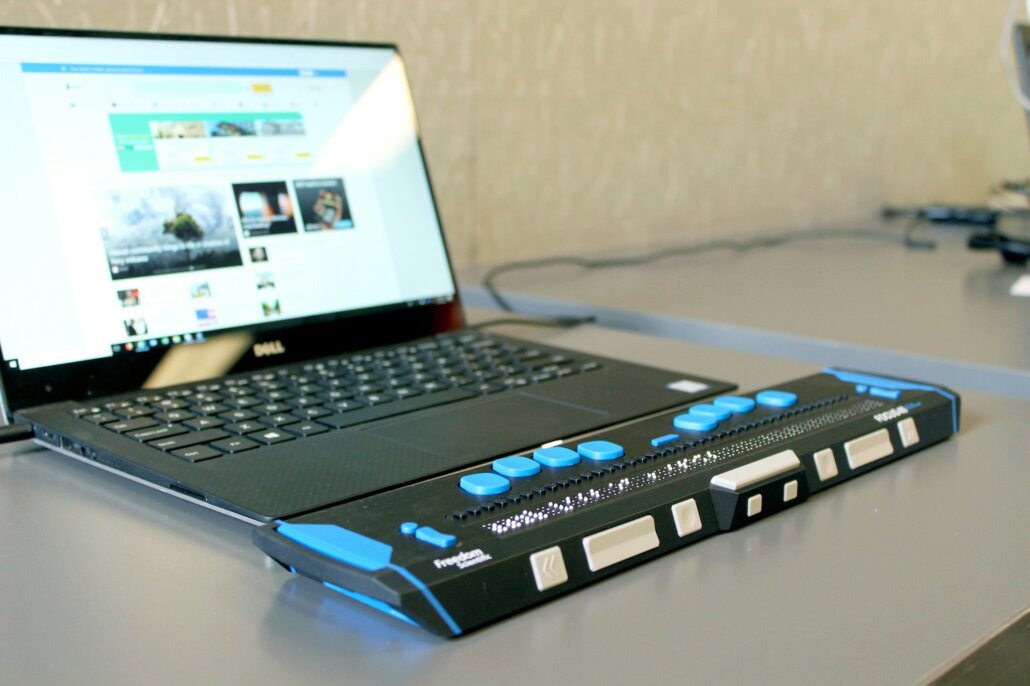Good Web Design is Aesthetically Pleasing, Great Web Design Incorporates Accessibility
How prioritizing accessible web design improves user experience and site functionality

“The power of the Web is in its universality. Access by everyone regardless of disability is an essential aspect.” – Tim Berners-Lee, inventor of the World Wide Web (1997)
Gone are the clunky and loud website designs that were prevalent at the beginning of the internet; websites today tend to be sleek, visually appealing and updated regularly to keep up with design trends. Especially since internet use is ubiquitous in modern life. People from nearly all countries, professions and ages access the internet daily, using the web to research, connect, create and entertain. Yet, despite the internet’s promise of being a place for all, accessible web design is still an afterthought for many organizations.
As digital and social landscapes continue to evolve, we have a responsibility to acknowledge the different needs of people who use technology, and to design websites with a range of abilities in mind. People deserve to access the websites they wish to visit, and to understand and interact with content in a meaningful way.
According to the Ontario Chamber of Commerce, the spending power of Canadians with disabilities is nearly $55 billion (CDN) annually. While in the USA, people with disabilities have nearly half a trillion dollars in disposable income according to a 2021 policy panel from the American Institutes for Research. Creating accessible web pages is not only an inclusive and ethical choice, but also a strategic one. By making design changes to increase web accessibility, you can drive growth, boost SEO, and improve user experience. Most importantly, you can ensure your website reaches the widest audience it can.
Accessible design practices to integrate into your site
There are several ways to prioritize accessibility when designing a website; our Creative Director Andrew Boardman’s webinar breaks down accessible design strategies into several categories:
Page structure
One way to prioritize accessibility is by laying out your webpages to be easy to follow. To start, make sure your text is left aligned – this allows people to easily find and read content. Your site should also be free of visual clutter and only include elements that are necessary to your message (i.e. don’t include a video backdrop on an article which doesn’t need one).
Also, incorporate a level of visual hierarchy into your page by using header styles (H1, H2, H3, etc.). This allows users to follow the most important pieces on a webpage in the order they’re meant to.
Typefaces (fonts)
Generally, the messages on your website are communicated through writing, and the writing is communicated through fonts. If your audience can’t read your fonts, they’re not going to understand your message.
To make your site accessible to people with visual impairments, choose fonts that are easily legible, with consistent and balanced letter forms (for example, the font Lexend, which was designed with dyslexia in mind).
Also, break up your text into small, scannable chunks with short line lengths. Be mindful of your use of italics and bold type, and remember to make your font a legible size (minimum 16 px on mobile and 18-20px on desktop).
Color contrast
Employing a strong color palette isn’t only an aesthetic advantage for your webpage or a tool to build brand identity; it can help with accessibility too. Using contrasting colors boosts legibility and page organization, and builds a strong brand identity.
Be careful when overlaying colored text on a colored background – a light blue text on a light blue background will be difficult to read. Choose text and background colors that contrast with one another, like black and white or light and dark variations of the same color.
Navigation
Any good website should be easy to navigate – if you don’t know where to go on a website, finding the information you need will be difficult. Laying out the pages of your site clearly and keeping your features predictable and consistent helps people know where to go and what to expect.
One other tip is to check if your website can be navigated without a mouse. For many people with disabilities, keyboards or other tools are more accessible to move around a website. See if you can move around a page and enter a new one with your keyboard.
Buttons and labels
Links are an important part of any website. To make sure people don’t miss them, signify links with a visual cue, like an underline. Also, increase the effectiveness of calls-to-action by using specific, action-oriented verbs rather than generic language.
For example, if a tab pops up asking users if they’d like to save their changes, don’t have the options listed as yes or no. Instead, explain the task in the options using verbs: save or discard.
Images
Images are a great way to add depth, detail and design. However, they should be chosen with intent. Select images that show a range of diverse, real people, and add alternative text (alt text) to images when you can which allows people with visual impairments to get a description of a photo. When using alt text, make sure the descriptions are detailed and relatively short.
Why choose accessible web design?
People with disabilities make up a substantial percentage of the global population. In California, the CDC’s National Center on Birth Defects and Developmental Disabilities reported that over seven million people – or about 25 percent of the population – are living with a disability. And according to Statistics Canada, 27 per cent of Canadians had one or more disabilities that limited them in their daily activities in 2022.
These numbers highlight the significant influence and presence of the disability community in North America and beyond. As the number of people with disabilities in Canada and the USA continues to grow, designing accessible websites will become more important for every organization looking to meaningfully and appropriately connect with their audiences, and ensure they reach the largest audience possible.
There’s also an ethical obligation to ensure your webpage can serve everyone equally. Small design tweaks can make huge differences to people with disabilities using the Internet. The UN Convention on the Rights of Persons with Disabilities recognizes access to information as a basic human right, so prioritizing accessible design shouldn’t be an afterthought, but rather a priority from the start.
Curious about accessible web design and how you can integrate it into your work? Connect with our team at Mangrove to learn how you can make your website more accessible.
Photo by Chaosamran_Studio on iStock
A Certified B Corp, Mangrove is a woman-owned website design and development company with a diverse, talented team distributed around the globe. We’ve been building websites since 2009 that amplify the work of change-making organizations and increase the competitive power of businesses owned by historically marginalized people.
If you found this post helpful, subscribe to our monthly newsletter for notice of future posts and other news from us.




